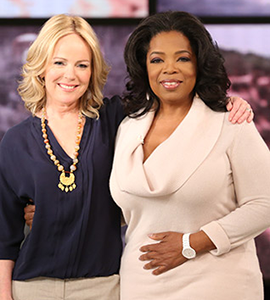My Avatar, My Self
On a recent evening I rode up the elevator to a party in New York with the writer Kati Marton, who had just published a memoir about the untimely death of her husband, diplomat and UN ambassador Richard Holbrooke. She looked shaken, and though I know her only slightly, I felt compelled to ask if she was all right. She’d just come from giving a reading, she told me, where the audience was full of other grief-stricken people who had come to hear her, not because of the literary quality of her work, the stellar reviews, her vaunted reputation, but rather because she had become a “figure”—someone who was “sharing” about her loss, and with whom they, too, wanted to share.
In the last five years or so, writers have started to juggle three realities, and it isn’t graceful, or easy—in fact, it’s complicated, and many of us are awkward about it. We have our “real” selves, of course—the ones who put dinner on the table and drive the kids to school and go out for a few beers with friends; then we have our creative selves, which require the solitude, the space to access the private, internal place which we write from; and then we have this whole other self, one that threatens to encroach on the other two: our “avatar” selves—the pixelated, haiku version that tweets and maintains a Facebook page and goes on the road in carefully planned outfits (these could be ripped jeans and a T-shirt, but believe me they’ve been thought through) and this—this avatar version—becomes how we’re seen, how we’re responded to, and if we are not careful, we are at risk of it becoming who we are.
After my last book—a memoir called Devotion—came out, I spent eighteen months on the road. Not a week went by in which I wasn’t in front of an audience, somewhere. I learned the intricacies of packing a carry-on, got to know the TSA people at my local airport by first name. At the same time, I was maintaining my Facebook page, which was growing by the day, and I was learning to tweet. Oh, and blog. Each week, I wrote a blog post. I received dozens of e-mails a day from readers who had connected with my story of a complex and rocky path that led me away from the strict religious observance of my childhood to a place, in midlife, of needing to figure out what I believed and how I might create an inclusive, eclectic and meaningful daily existence for myself and my family. These readers thanked me for sharing, and then told me their own stories—often in great detail—painful, wrenching stories that by their very natures demanded a response.
I spent my time—for that year and a half—in full-on public engagement. I developed a certain comfort level and skill for public speaking. When I began my book tour, I was asked by an organization interested in booking me as a speaker to describe my “message.” I was confounded. I was a novelist and memoirist, I said. I didn’t have a message. Wrong answer. I quickly learned that if I wanted the opportunity to speak in front of audiences larger than the dozen or so who frequent bookstore readings, I would have to reverse-engineer my book in order to unearth some sound bites. As I traveled the country disguised as something of a motivational speaker, I was away from my husband, my young son, my home, my dogs, my desk. At a certain point, I began to see that I was away from my self—the very self that had written the book.
It’s a noisy, noisy world. Writers have navigated public appearances and book tours for years, but our presence on social media and its concomitant daily engagement with ourselves as “figures” is something relatively new—and we’re only at the beginning. Without a doubt, all that I’ve done in the last several years—the speaking gigs, the social media presence (I have more than 6,000 friends and “likes” on Facebook and nearly that many Twitter followers, and regularly get notes from other writers and even editors asking how to build their “platforms,” which is a word I despise and an idea I had never even considered)—all that work has helped me enormously in the “business” of writing. The impression is that I have a very successful career. And while I do have a successful career, the success of my avatar has outpaced me. My avatar has an endless stream of fun and engaging experiences, and never has a bad day. My avatar is awesome. I almost kind of envy her.
I live on the top of a hill in the middle of nowhere. Now that my book tour is over, I write in a silent house when my family is gone for the day. I don’t answer the phone, and use a software program called “Freedom” that shuts down the Internet on my computer during the hours I write. I find myself getting more and more militant about protecting my time—the time devoted to my creative self—in the hope that the work that self does, during those hours, will be able to speak for itself.
But my guess is that when my next book comes out (a book, ironically enough, that I sold based on the success of my blog) I will once again be packing my carry-on, once again getting to know the new crop of TSA agents at the airport. I will up my tweeting and Facebook presence, and I will be accessible to my readers. Because I want to be read. I want that private, intimate, high-wire act that takes place in the quiet of my empty house to find its voice in the world—and these days, the only way that’s going to happen is if I help it along—all the while finding a way to stay very clear and honest and self-aware, so that I don’t ever mistake myself for my avatar. I check in with her on a daily basis, I tweet cleverly for her, and post photographs on Facebook of her speaking to audiences, or walking down streets in far-flung cities. I announce her appearances, and even sometimes where she’s having dinner. But I remember that she’s not me. Not exactly. Because the minute I forget, the writing will turn to dust.


















